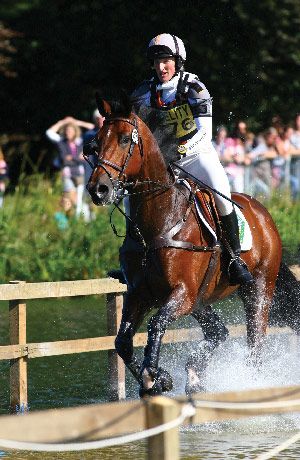Optimum Competition Nutrition
 Energy intake is often the focus of the competition horse’s diet but other nutrients are just as important to ensure optimum performance.
Energy intake is often the focus of the competition horse’s diet but other nutrients are just as important to ensure optimum performance.
Protein
The provision of sufficient quality protein, for example, is critical since the essential amino acids it provides, like lysine and methionine, are important for muscle development and function. Where the diet is deficient, the horse will struggle to maintain a rounded top line and may lack power and strength – a fit horse should not be thin and angular.
Amino acids are also major components of the hoof (and most body tissues) and hoof quality and integrity are reliant on a combination of these plus calcium, zinc sulphur, copper, selenium, vitamin A and oils, and not on the vitamin, biotin, alone, as we are often led to believe. This illustrates the importance of a fully balanced diet to supply all these nutrients rather than supplementation with a single nutrient alone.
Vitamins and Minerals
Indeed the importance of vitamins and minerals in the competition horse’s diet cannot be over emphasised. Copper, for example, is important for the formation of haemoglobin (which carries oxygen in the blood) and plays a major role in the mobilisation and utilisation of iron. Horses who become fatigued or “below par” at the end of the season may be diagnosed as slightly anaemic, for which the long-term-fix is a fully balanced diet supplying sufficient copper rather than a quick-fix dose of an iron-based blood tonic.
All minerals have many functions within the body but zinc and manganese are also vital components of enzymes and play an important role in the utilisation and metabolism of carbohydrates and fats so, even though a diet may supply more than enough carbohydrates to fuel performance, if the micronutrients are in short supply, the energy sources cannot be utilized to the full.
Bio-availability
Since they are so important, reputable manufacturers now include certain minerals in a more bioavailable form in those feeds designed to support performance. Chelating minerals involves attaching copper, zinc and manganese, to carbohydrate or protein molecules so that they are more easily absorbed and utilised by the horse’s body. Likewise, selenium, included in the form of an organic seleno-yeast, also ensures the improved bioavailability of this essential mineral to the horse at peak fitness and during times of stress.
Antioxidants
Selenium and vitamins, like C and E, are very important as antioxidants, since the greater the physical demands on the horse, from performance and the associated stress, the more free radicals are produced. They are also involved in the immune response, helping protect against the potentially increased challenge of disease experienced by the busy competition horse.
Omega Oils
Omega 3 and 6 fatty acids supplied by vegetable oils are not simply a source of slow release energy but have a range of other roles. Omega 3 fatty acids have anti-inflammatory properties and a balance should be maintained with Omega 6 fatty acids, which have a pro-inflammatory role in the immune response. Competition horses also benefit from the inclusion of digestive enhancers, like Yea-Sacc® or prebiotics, to maintain gut health and function and to optimise fibre utilisation, especially when receiving a lower forage, higher cereal diet.
Recommended Levels
So, with increased requirements for so many key nutrients, it’s clear why the competition horse should receive an appropriately formulated feed, however, this can only provide a fully balanced diet to meet these requirements when fed at the recommended level. Any horse receiving less than this should have the diet topped up with a nutrient-dense balancer to provide the essential nutrients without associated calories. Horses whose temperaments or waistlines mean they are expected to compete on high fibre, low energy, lower nutrient feeds, formulated for leisure horses, should also have the nutritional status of their diets improved with a balancer.


